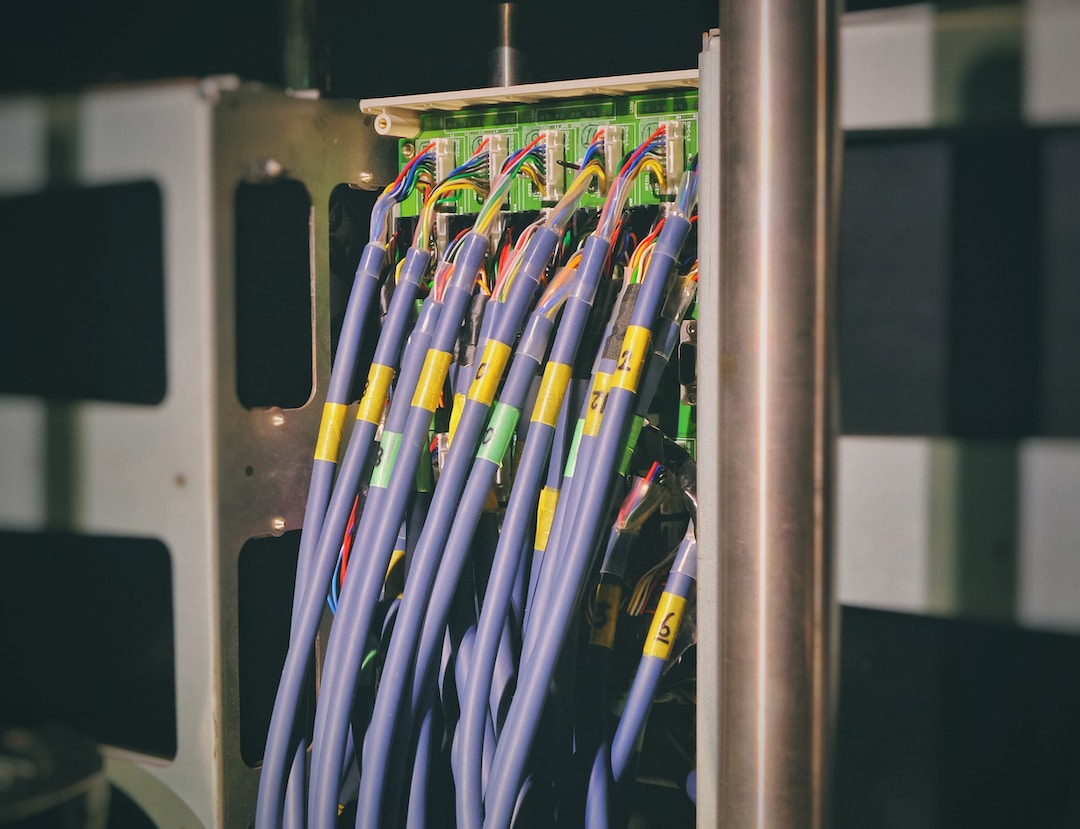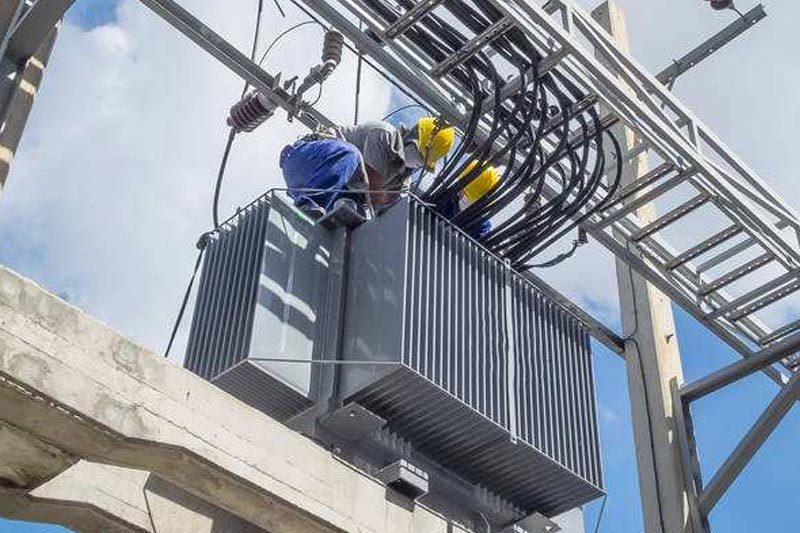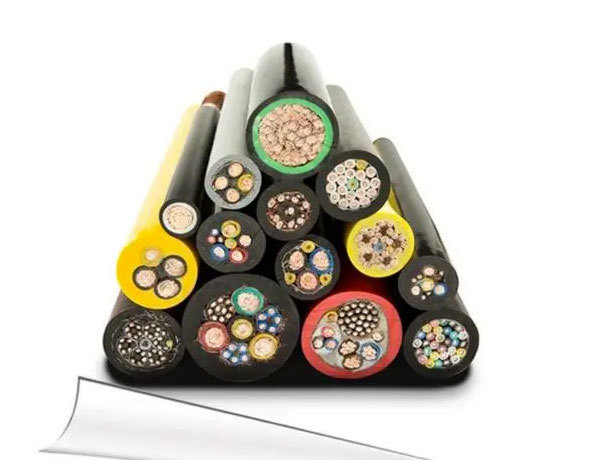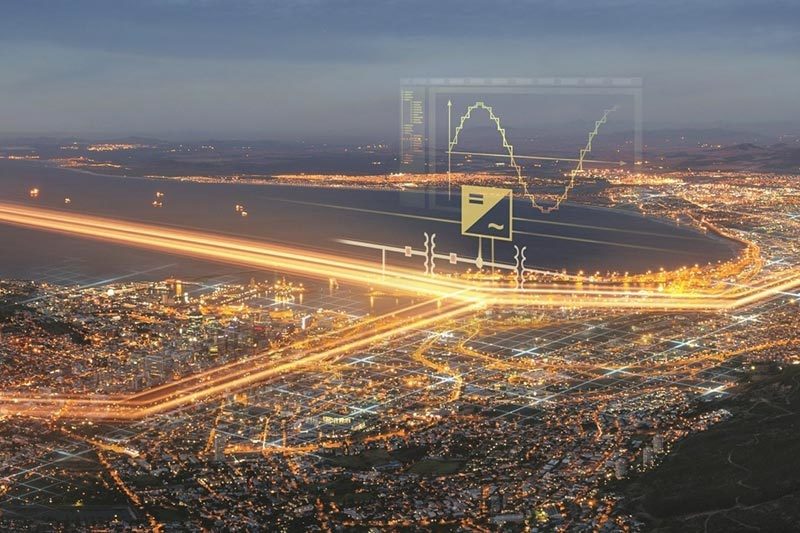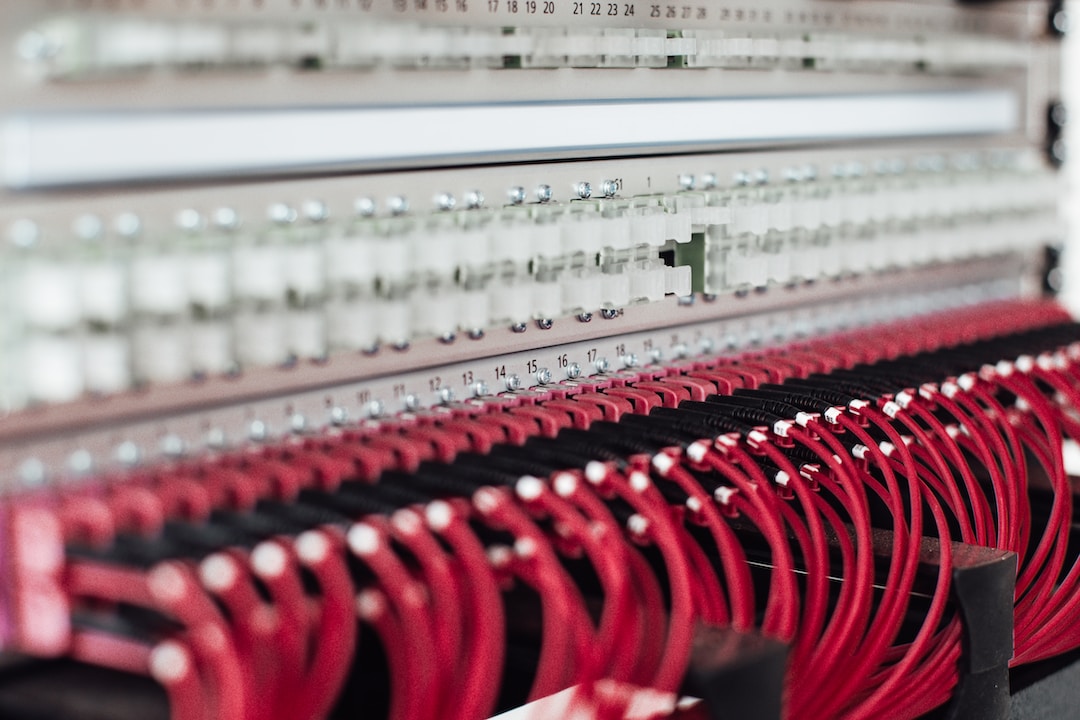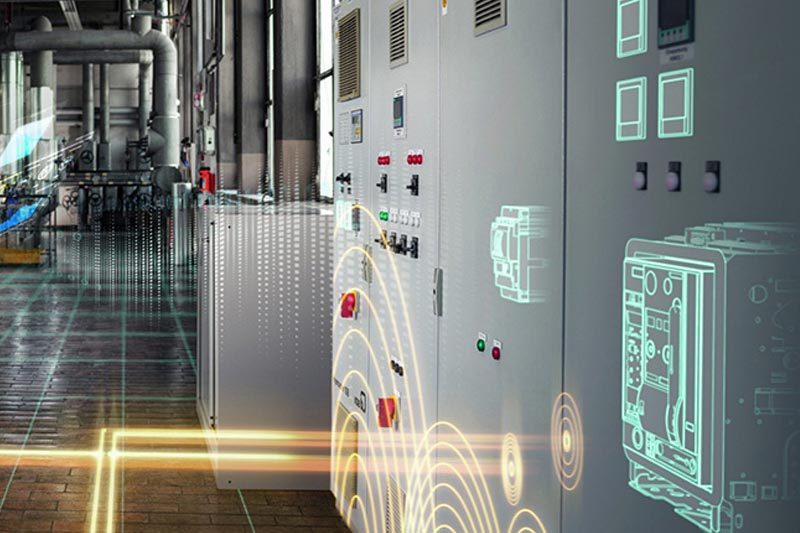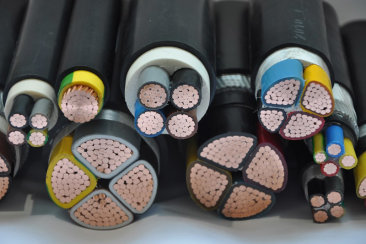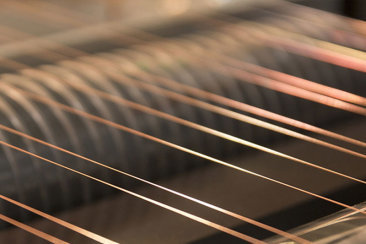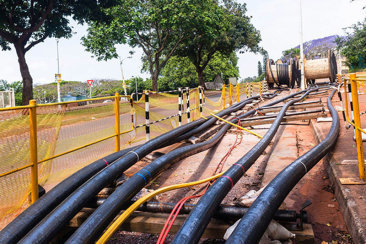17
2023-11
Why can't strong and weak electricity go together
Strong and weak wires are generally not recommended to be placed together because their voltage and current parameters are different. If placed together, it is easy to cause interference and mutual influence, which can affect the normal operation of electrical equipment. Strong wires generally refer to wires with a voltage greater than 220V, such as power lines, light lines, etc. in households. Weak wires generally refer to signal lines with lower voltage, such as telephone lines, network lines, monitoring lines, etc. The voltage and current parameters of strong and weak wires are different. If they are placed together, it is easy to generate electromagnetic interference and crosstalk, which can affect the transmission and reception of weak electrical signals and even damage electrical equipment. Therefore, in order to ensure the normal operation of electrical equipment, strong and weak wires should be laid separately, or isolation measures should be taken for protection. For example, in buildings, strong and weak wires should be laid separately in different pipelines or cable trays, or protected by isolation measures such as metal shielding.
2023-11-17
28
2023-08
What are the models of high-temperature resistant wires and cables? In what scenario is it used?
When renovating some factories, we often hear renovation technicians say they need to use high-temperature resistant cables. So what are high-temperature resistant wires and cables? What are the differences from regular cables? What are the models of high-temperature resistant cables? Let's learn about it together with the Buying and Selling Treasure editor. High temperature resistant wires are used as connecting wires for electrical instruments and transmission lines for automatic control systems with rated AC voltages of 450/750V and below. Compared with ordinary cables, high temperature resistant wires have the characteristics of corrosion resistance, strong alkali resistance, strong oxidation resistance, waterproof, wear-resistant, acid alkali resistance, aging resistance, non combustible, electrical insulation performance, high voltage resistance, moisture resistance, etc. They have a long service life, are safe and reliable, and are widely used in aerospace, locomotives and vehicles Energy, steel, non-ferrous metal smelting, oil extraction, electric motors and other fields. High temperature resistant cables with long-term continuous working temperatures of 125 ° C, 135 ° C, 150 ° C, 180 ° C, 200 ° C, 250 ° C, and above are commonly used, including irradiated polyethylene stems, silicone rubber, fluororesin, polyimide, mica, magnesium oxide, and other cables. High temperature resistant cable models include YGC, KGG, KFV, KFF, etc. Specifically, as follows: KFF: Fluoroplastic insulated and sheathed control wires and cables KFFP: Fluoroplastic insulated and sheathed shielded control wires and cables KFFR: Fluoroplastic insulated and sheathed control flexible wire and cable KFV: Fluoroplastic insulated polyvinyl chloride sheathed control wire and cable KFVP: Fluorine plastic insulated polyvinyl chloride sheathed shielded control wire and cable KFVR: Fluorine plastic insulated polyvinyl chloride sheathed control flexible wire and cable KFVRP: Fluorine plastic insulated polyvinyl chloride sheathed shielded control flexible cable KFV22: Fluorine plastic insulated polyvinyl chloride sheathed steel strip armored control wire and cable KFVP22: Fluorine plastic insulated polyvinyl chloride sheathed steel strip armored control wire and cable KFVR22: Fluorine plastic insulated polyvinyl chloride sheathed steel strip armored control flexible wire and cable Wire and cable KFVRP22: Fluoroplastic insulated PVC sheathed steel strip armored shielded control flexible wire and cable KFFV22: Fluoroplastic insulated and inner protective package PVC outer sheathed steel strip armored control cable wire KFVRV22: Fluoroplastic insulated and inner protective package PVC outer sheathed steel strip armored control flexible cable wire High temperature resistant cable product execution standard: Q/HHTZH004.1; The flame retardant and fire resistance characteristics test shall comply with the GB12666-90 standard. AC rated voltage: U0/U, 450/750KV* High working temperature: For example, the insulation of perfluoroethylene propylene (F46) should not exceed 200 ℃. The above is what high-temperature resistant wires are and common models, hoping to help you
2023-08-28
17
2023-11
Why do most wires and cables use copper as the core?
Why do most wires and cables use copper as the core? Because copper ranks second among all non-ferrous metals in terms of conductivity, the copper content in cables cannot be lower than 99.5%. Why not use silver with the highest conductivity to make wire cores? Mainly due to the high cost, low toughness, and easy breakage of silver. In addition to copper, aluminum is also a commonly used cable material. Aluminum has low cost and light weight, but has drawbacks such as oxidation. Therefore, long-distance overhead transmission of aluminum wire is more suitable. For copper wire, it carries a larger current. Therefore, when engineering scenarios require it, it is best to choose copper wire as the conductor.
2023-11-17
28
2023-08
How to choose heat-resistant and high-temperature wires and cables
Generally, wires and cables are insulated with plastic and rubber sheaths, which are conventional engineering materials with abundant sources and can meet large-scale production, and the cost is relatively low. However, for some special industries such as petrochemicals, steel, aerospace, shipbuilding, military industry, pharmaceuticals, food, plastic machinery, boilers, and other industries related to heat and high temperature, wires and cables that can withstand certain high temperatures are required. Ordinary wires and cables are obviously not suitable for use, and wires and cables that can withstand high temperatures are needed to ensure the safe operation of their power and signals. With the rapid development of China's economy, the demand for high-temperature cables in the special industry has shown a rapid growth stage. Heat resistant and high-temperature cables grow at a rate of 20% annually. As an important component of special cables, high-temperature cables have strong vitality and supply is in short supply. China imports about 2 billion yuan from abroad every year for domestic construction. The International Electrotechnical Commission (IEC) generally defines the heat resistance level of insulation as follows: Heat resistance grade YAEBFHC *High allowable working temperature/℃ 90105120130155180 ≥ 180 The insulation and sheath of our ordinary wires and cables are made of ordinary engineering rubber and plastic as basic resins, but the requirement is insulation grade. Common rubber materials used for cables include butadiene rubber, ethylene propylene rubber, natural rubber, and chlorosulfonated polyethylene, with a working temperature of (60-75) ℃; Common plastic materials used for cables include polyvinyl chloride, polyethylene (including cross-linked polyethylene), and polypropylene, with a working temperature of (70-90) ℃. It can be seen that these cables are not strictly heat-resistant or high-temperature cables. Heat resistant cables generally refer to cables with temperatures ranging from 90 to 155 ℃ and below, while high-temperature cables refer to cables with temperatures ranging from 180 ℃ and above. To solve the problem of ordinary cables not being able to withstand high temperatures, it is necessary to improve the materials or use insulation grade materials that can withstand high temperatures.
2023-08-28
17
2023-11
The difference between Category 5 network cables and Category 6 network cables
1. The structure is different. The twisted pair cables in Class 6 network cables have a cross skeleton, and installing the cables inside the skeleton can provide a good insulation effect. Secondly, the copper cores of the two are different in size. The copper cores of Class 5 are below 0.45mm, while those of Class 6 are between 0.56mm and 0.58mm. In terms of appearance, the outer diameter of Class 5 network cables is thinner than that of Class 6 network cables. Class 5 network cables have the CAT5 logo on the outer surface, while Class 6 network cables have the CAT6 logo. 2. The wire cores are different. The diameter of Class 6 ranges from 0.56 to 0.58 millimeters, while Class 5 only has a maximum of 0.45 millimeters, which can be seen with the naked eye. The thickness of these two types of lines is different. 3. The identification is different. The outer packaging of Class 6 is labeled Cat6, while Class 5 is labeled Cat5. 4. Different performance. The transmission performance of Category 6 Ethernet cables is higher than that of Category 5. The transmission bandwidth of Category 5 network cables is 100MHz, while Category 6 network cables can not only adapt to 100MHz, but also transmit gigabit network speeds. In addition, the transmission performance of Category 6 Ethernet cables is also more stable than that of Category 5 Ethernet cables, as the cable crosstalk and echo loss of Category 6 Ethernet cables have been optimized. 5. Prices vary. In terms of sales price, because Category 6 Ethernet cables have advantages over Category 5 Ethernet cables in terms of material usage and performance, the price will be higher than Category 5 Ethernet cables. 6. The size of the copper core varies. The copper core size of Category 6 network cables and Category 5 network cables is different. The copper core size of Category 5 network cables is below 0.45mm, and the standard size for Category 6 network cables is 0.56mm-0.58mm. 7. The transmission bandwidth is different. Five types of network cables with a transmission bandwidth of 100Mbps are mainly used for data transmission in 100Mbps and 10Mbps networks; Category 6 Ethernet cables have a speed of over 1000Mbps and are mainly used in gigabit networks, with transmission performance far exceeding the Category 5 Ethernet cable standard. 8. The signal-to-noise ratio is different. The signal-to-noise ratio of Category 6 network cables is higher than that of Category 5 network cables, which means it can better resist external interference and maintain signal quality. This makes Category 6 network cables more suitable for high-speed data transmission and long-distance transmission. 9. Backward compatibility is different. Both Category 5 and Category 6 cables are backward compatible, which means they can be compatible with earlier versions of network devices such as switches, routers, etc.
2023-11-17
28
2023-08
Damage and prevention methods of shielded cables
There are many correct or incorrect processes in the manufacturing process of the shielding layer. One important parameter is the weaving angle of the shielding layer. In cables used for drag chains, the load borne by the shielding layer of the outer diameter of the cable must be taken into account. An unreasonable weaving angle of the shielding layer will further increase the tension load, leading to damage to the shielding layer. This can result in a weakened shielding effect, and even cause a short circuit when the sharp end of the cable punctures the wool fabric or foil material and comes into contact with the core wire. Here, we recommend a useful tip for you: if you peel off the insulation layer, you can easily push the shielding layer back into the sheath, but this shielding layer is not suitable for high flexible cables in energy supply systems that are in motion. Of course, Igus can provide direct solutions to these problems: The shielding layer weaving angle determined through long-term experiments can effectively counteract tension, making it very suitable for drag chains. Due to the stable inner sheath, the shielding layer will not relax or fail. In twisted wire structures, the shielding layer itself has anti torsion performance. Wear or damage of protective sheath Any internal structural defects are difficult to detect from the outside, but issues with the sheath can be directly observed with the naked eye. The sheath is a * * * * layer of protection for the precise internal structure of the cable. That's why cracked, worn, and deformed sheaths are very serious quality issues. To avoid such problems, Igus offers seven different materials of cable sheaths for users to choose from based on their mechanical working environment. Armor type extruded sheath Manufacturing process and materials are equally important factors in determining product quality. In some so-called cables suitable for drag chains, the sheath is usually tubular, so it cannot provide the necessary support for the stranded wire structure during long-term bending, making it easy for the stranded wire structure to split. As a * * * * manufacturer of drag chain systems, Igus has developed an armored extruded sheath. This type of sheath ensures that the core wire of the cable will not loosen during movement. The reason is that the sheath is compressed by a particularly high pressure, acting like a guide groove that guides the movement of the core wire while also providing support. Therefore, it is very suitable for drag chains. Summarize the quality assurance for high flexible cables suitable for drag chains: center stress relief design; Multi bundle cable structure; The inner sheath of the shielded cable is formed by armor type extrusion; Full screen insulated woven mesh; Optimized shielding weaving angle; Armor shaped extruded sheath.
2023-08-28
17
2023-11
Most cables on the market are made of copper core, what are the advantages of copper
Nowadays, cables have been used in industry. All aspects of production and life, including railways, ports, smelting, communication, and multiple industries, have rapidly developed with the help of cable technology. The current situation in the cable industry is that copper has better conductivity and thermal conductivity than aluminum, and wires and cables often use copper as a conductor. Currently, 97% of cables on the market are made of copper. Nowadays, the demand for cables in various industries is increasing, with an annual total output value of 1.2 trillion yuan, which consumes nearly 50% of China's copper resources, and 60% of copper resources are imported each year. Why can copper occupy such a large share of cable conductors? What are the advantages of copper cores compared to other metals? The most important points to count copper cores are as follows: copper has a low electrical resistivity, so let's compare it with another commonly used metal aluminum in cable conductors. The electrical resistivity of aluminum cables is about 1.68 times that of copper cables; The ductility of copper is also better than that of aluminum. Generally, the ductility of copper used for electrical purposes is over 30%, while aluminum is only 18%; Copper is more fatigue resistant, aluminum is prone to cracking during use, while copper has better elasticity and is less prone to fracture; Copper also has stronger corrosion resistance than aluminum; In terms of oxidation resistance, copper is also more stable than aluminum. In actual processes, copper core cables obviously have a longer lifespan, are more durable, and have more stable performance than aluminum core cables. That's why copper can occupy such a large proportion of cable conductors. However, replacing aluminum with copper is currently the main direction for the development of the entire cable industry. On the one hand, the high international copper prices have made the cost of cable related industries too high. In order to reduce costs, the cable industry has begun to develop research on replacing copper with aluminum. China is an active participant and researcher in the aluminum replacing copper plan, and has already achieved remarkable results in rare earth aluminum alloy cables. This is due to national strategic considerations, As the largest cable manufacturing country today, China needs to purchase a large amount of copper from abroad every year. In order to break away from this serious import dependence, the development of aluminum alloy cables is also imperative. In recent years, China has begun to explore rare earth aluminum alloy cables and has achieved good results. The independently developed rare earth high iron aluminum alloy conductor with independent intellectual property rights in China can replace copper cables in the market. Compared with copper cables, it has no inferior conductivity and flexibility, and its comprehensive usage cost is 40% lower than copper cables. Due to the relative abundance of aluminum metal compared to copper resources, aluminum has good advantages in both reducing cable costs and providing sufficient resources. Aluminum alloy cables are also considered the major direction for future cable development.
2023-11-17
28
2023-08
The difference between environmentally friendly cables and low smoke halogen-free cables
Low smoke and halogen-free cables are often used in many key projects, such as fire protection, monitoring, and alarm systems. They are commonly referred to as environmentally friendly cables, but in fact, environmentally friendly cables do not refer to low smoke and halogen-free cables. The following is a detailed analysis of the differences between environmentally friendly cables and low smoke and halogen-free cables: 1. Halogen free: The use of green and environmentally friendly insulation layer, sheath, and specially made oxygen barrier material not only has good electrical and physical mechanical properties, but also ensures that the product does not contain halogens, solves the "secondary pollution" formed during combustion, and avoids the carcinogenic "dioxin" substances produced by traditional PVC wires during combustion. 2. High flame retardancy: Environmentally friendly cables fully guarantee their high fire safety requirements for buildings. In the event of a fire, cables are not easily combustible and can prevent the spread of flames and the expansion of disasters after combustion. 3. Low toxin: The insulation and sheath do not contain heavy metals such as lead and cadmium that are harmful to human health, and will not cause pollution to soil and water sources during cable use and disposal. And after rigorous toxicity experiments, the white mice were unharmed under the prescribed experimental conditions. 4. No corrosive gas generated: The use of new special coating materials that are environmentally friendly does not produce gases such as HCL during production, use, and combustion. It emits very little acid gas and causes minimal damage to personnel, equipment, and instruments, making it more environmentally friendly. 5. Waterproof and UV resistant: Green and environmentally friendly materials with special molecular structures are used to ensure ultra-low water absorption. Special UV absorbers give the product excellent UV protection. This ensures the safety and prolongs the service life of this type of product* The first company to initiate the name "environmentally friendly cable" was a Japanese company, which established the FN (Economic) ecological cable standard as its product standard. Western countries such as the UK also developed advanced requirements for environmentally friendly cable standards, which gradually spread to the world. 6. High transmittance: The smoke generated during cable burning is extremely thin, which is beneficial for personnel evacuation and firefighting work. The product has a light transmittance of over 40%, far exceeding the standard of less than 20% for traditional flame retardant cables.
2023-08-28
28
2023-08
Characteristics and usage scenarios of several fire-resistant and flame-retardant cables
1. NH-YJV: Fire resistant cross-linked polyethylene insulation, polyvinyl chloride sheathed power cable It can be laid indoors, in tunnels, and in pipelines, and can withstand certain laying traction, but the cable cannot withstand external forces. Single core cables are not allowed to be laid in magnetic material pipelines. If it needs to withstand mechanical external forces, it is necessary to wrap steel strip armor. Suitable for special requirements, such as large capacity power plants, nuclear power plants, underground railways, high-rise buildings, etc. 2. YJV: Crosslinked polyethylene insulation, polyvinyl chloride sheathed power cable It can be laid indoors, in tunnels, and in pipelines, and can withstand certain laying traction, but the cable cannot withstand external forces. Single core cables are not allowed to be laid in magnetic material pipelines. If it needs to withstand mechanical external forces, it is necessary to wrap steel strip armor. 3. ZR-VV: Flame retardant PVC insulated and PVC sheathed power cables Can be laid indoors, in tunnels, cable trenches, pipelines, flammable and severely corrosive areas, but cannot withstand mechanical external forces. If it needs to withstand mechanical external forces, it is necessary to wrap steel strip armor. Features: In the case of open flame combustion, remove the ignition source and automatically extinguish within ≤ 12 seconds. 4. ZR-YJV: Flame retardant cross-linked polyethylene insulation, polyvinyl chloride flame retardant sheathed power cable It can be laid indoors, in tunnels, and in pipelines, and can withstand certain laying traction, but the cable cannot withstand external forces. Single core cables are not allowed to be laid in magnetic material pipelines. If it needs to withstand mechanical external forces, it is necessary to wrap steel strip armor. Features: In the case of open flame combustion, remove the ignition source and automatically extinguish within ≤ 12 seconds. 5. NH-VV: Fire resistant PVC insulated and PVC sheathed power cables Can be laid indoors, in tunnels, cable trenches, pipelines, flammable and severely corrosive areas, but cannot withstand mechanical external forces. If it needs to withstand mechanical external forces, it is necessary to wrap steel strip armor. Suitable for special requirements, such as large capacity power plants, nuclear power plants, underground railways, high-rise buildings, etc.
2023-08-28
28
2023-08
The necessity of replacing conventional cables with photovoltaic cables
In recent years, with the support and guidance of relevant national policies, the solar photovoltaic power generation industry has developed rapidly, and the installed capacity of photovoltaic power stations has been increasing year by year. However, due to the relatively lagging research and market promotion of domestically produced photovoltaic cables, conventional cables are still used for connecting photovoltaic power station equipment during the construction and operation process. Due to the lack of consideration for complex and varied usage and laying environments of photovoltaic power plants during the design and manufacturing process of conventional cables, they are unable to meet usage requirements, resulting in frequent quality problems in photovoltaic power plants. Especially the quality problems caused by the inability of conventional cables to meet the requirements of the power plant operating environment are particularly evident. And specialized photovoltaic cables are designed according to the complex and ever-changing usage environment of photovoltaic power plants, which can meet the laying and operation requirements of photovoltaic power plants. The use of specialized photovoltaic cables, especially on the DC side, in photovoltaic power plants can effectively reduce the occurrence of quality problems.
2023-08-28


